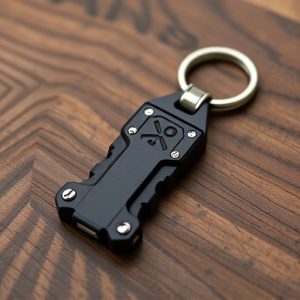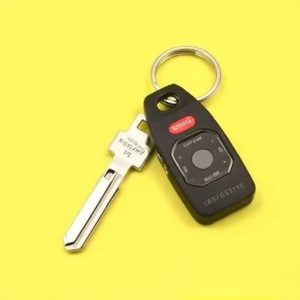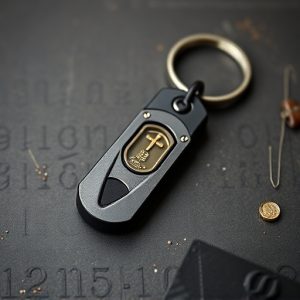Designing Metal Defense Keychains: Legal Tips for Self-Defense Tools
Designing a metal defense keychain requires balancing functionality, comfort, and safety under varyi…….
Designing a metal defense keychain requires balancing functionality, comfort, and safety under varying Keychain Weapon Permit Requirements by jurisdiction. Focus on ergonomic grips for swift deployment, durable materials like metallic alloys, optimal finger placement, and trigger accessibility aligned with natural hand movements. Ensure compliance with local laws while offering discreet storage options through sheaths for enhanced usability and security. Prioritize non-threatening designs that meet permit requirements, providing peace of mind and legal safety for self-defense tool ownership and carry.
“Unleash your creativity and transform everyday items into powerful self-defense tools! This comprehensive guide explores the art of designing and crafting metal defense keychains. From understanding fundamental grip design principles to navigating legal aspects, such as keychain weapon permit requirements, you’ll learn how to create a functional and comfortable self-defense accessory. Discover tips for optimizing comfort, balance, and effectiveness, ensuring your keychain is not just stylish but also a reliable companion for personal safety.”
- Understanding Metal Defense Keychain Grip Design Principles
- Keychain Weapon Permit Requirements and Legal Considerations
- Crafting a Functional and Comfortable Keychain Self-Defense Tool
Understanding Metal Defense Keychain Grip Design Principles
Understanding the metal defense keychain grip design principles is paramount when crafting a functional and safe accessory. Keychain weapon permit requirements vary by jurisdiction, but a well-designed grip ensures your keychain firearm can be easily accessed and controlled in an emergency. The first consideration is ergonomic comfort; a secure, non-slip grip allows for swift deployment without compromising user safety or stability.
Material choice plays a significant role—metallic alloys offer durability and corrosion resistance—while ensuring the keychain remains lightweight to enhance portability. Design should also account for finger placement and trigger accessibility, aligning with natural hand movements for seamless operation. Remember, an intuitive, comfortable grip promotes confidence in your ability to use the keychain weapon effectively when needed, making it a crucial aspect of any self-defense strategy.
Keychain Weapon Permit Requirements and Legal Considerations
When designing a metal defense keychain with weapon functionality, it’s paramount to understand and adhere to the Keychain Weapon Permit Requirements mandated by local laws and regulations. These requirements vary significantly across jurisdictions, so designers must conduct thorough research to ensure their products comply. Legal considerations include age restrictions for ownership, permit types, and specific rules regarding carry and concealed weapons.
Understanding these Keychain Weapon Permit Requirements not only safeguards users but also helps manufacturers avoid legal pitfalls. It’s crucial to consider the overall purpose and intended use of the keychain, as certain designs or features might require additional permits or modifications to meet regulatory standards, ensuring safety, responsibility, and legality in the ownership and carrying of such devices.
Crafting a Functional and Comfortable Keychain Self-Defense Tool
When crafting a keychain self-defense tool, functionality and comfort are key. Consider the purpose of your keychain weapon—it needs to be easily accessible for quick deployment while also being comfortable enough to carry on your keys. The design should incorporate features that allow for a firm grip, ensuring you have control during use. A smooth, ergonomic shape can make all the difference in both grip and comfort, especially when you’re dealing with stress or panic.
Meets the keychain weapon permit requirements? Absolutely. Your design should prioritize safety, featuring a non-threatening appearance to avoid unnecessary attention while still being effective. Think about adding a sheathed design that allows for discreet storage of the tool until needed. This not only enhances its functionality but also adds a layer of comfort, knowing it’s readily available yet secure when not in use.
When designing or crafting a metal defense keychain, it’s crucial to balance functionality with comfort. Understanding the Keychain Weapon Permit Requirements and legal considerations is essential for creating a safe yet effective self-defense tool. By adhering to these principles and tips outlined in this article, you can develop a practical and comfortable keychain that enhances personal security without compromising usability.


